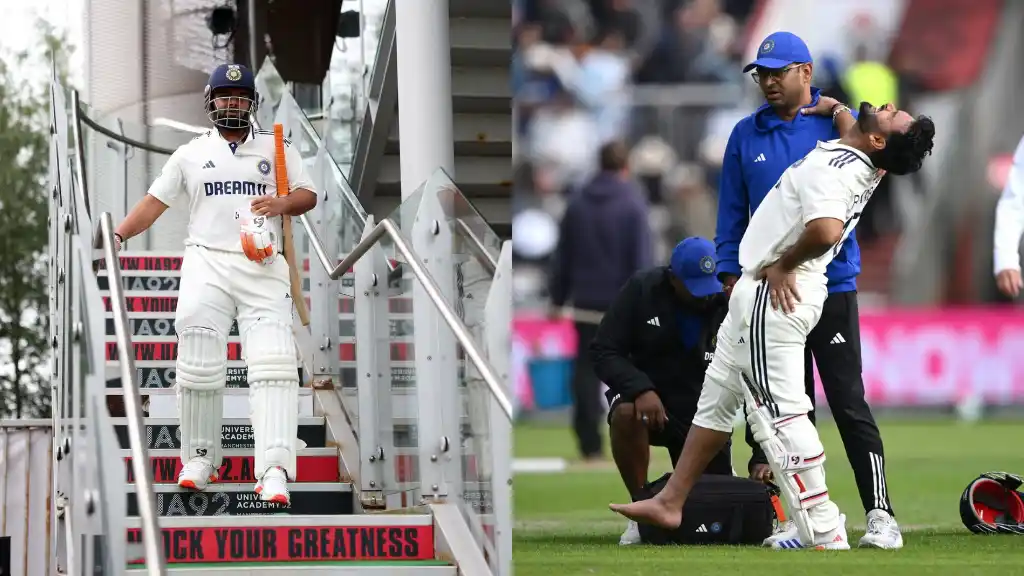Indian wicketkeeper-batter Rishabh Pant recently suffered a serious injury to his right leg during the Manchester Test match against England. Pant was trying to play a reverse sweep against Chris Woakes but missed the ball completely and got injured. Due to this, he could not keep wickets in that match and was also ruled out of the Oval Test. Now, Pant has also been ruled out of the Asia Cup 2025.
During the Oval Test, England fast bowler Chris Woakes also injured his left shoulder. These injuries started a big debate about the ICC’s current substitute rules. At present, if a player is injured, the substitute is not allowed to bat or bowl.
A concussion substitute is only allowed when a player gets a head or eye injury, and in that case, the substitute can bat or bowl. Since neither Pant nor Woakes had a head or eye injury, their replacements were not allowed to bat or bowl. India’s head coach Gautam Gambhir had argued that if a player suffers a serious injury during a match, then the team should be allowed a proper substitute.
Gambhir vs Stokes on the rule
After the Manchester Test, Gautam Gambhir said in a press conference, “If an injury is clearly visible and the player is unfit to continue, then with the umpire and match referee’s approval, a replacement should be allowed. This is important so that the contest remains 11 vs 11, not 10 vs 11.”
But England captain Ben Stokes disagreed. He said, “You pick 11 players, and injury is part of the game. If this is allowed, teams will try to misuse it. Concussion replacement is fine, but injury replacement should not be allowed.”
BCCI introduces Serious Injury Replacement Rule
Now, after Rishabh Pant’s injury, the Board of Control for Cricket in India (BCCI) has made major changes in the playing conditions for the upcoming 2025–26 domestic season.
In multi-day cricket (like Ranji Trophy and CK Nayudu Trophy), if a player suffers a serious injury during a match, then his replacement will be allowed to bat and bowl. This Serious Injury Replacement Rule is somewhat similar to the concussion substitute rule.
How the rule works:
- If a player gets a fracture or a deep external injury and cannot continue, the team manager can request the match referee for a serious injury replacement.
- The replacement must be “like-for-like” (e.g., a bowler for a bowler, batter for a batter).
- The match referee and on-field umpires must agree that it is a serious injury.
- If no wicketkeeper is on the substitute list, the referee can allow another player to keep wickets.
- Both the injured player and his replacement will be considered as having played the match, and their stats will be officially recorded.
Currently, BCCI has not applied this rule to white-ball cricket (Vijay Hazare Trophy, Syed Mushtaq Ali Trophy). A decision on whether this will apply in IPL 2026 is still pending.
Other rule changes by BCCI
Short Run Rule: If a batsman pretends to complete a run but deliberately does not touch the crease, it will be counted as a “deliberate short run.” Only the correctly completed runs will be counted. Now, in such cases, the umpire will also ask the opposition captain which batsman will take strike for the next ball.
Retired Out Rule: If a batsman retires without injury or special reason, he will be declared Retired Out and will not be allowed to bat again in that innings.



